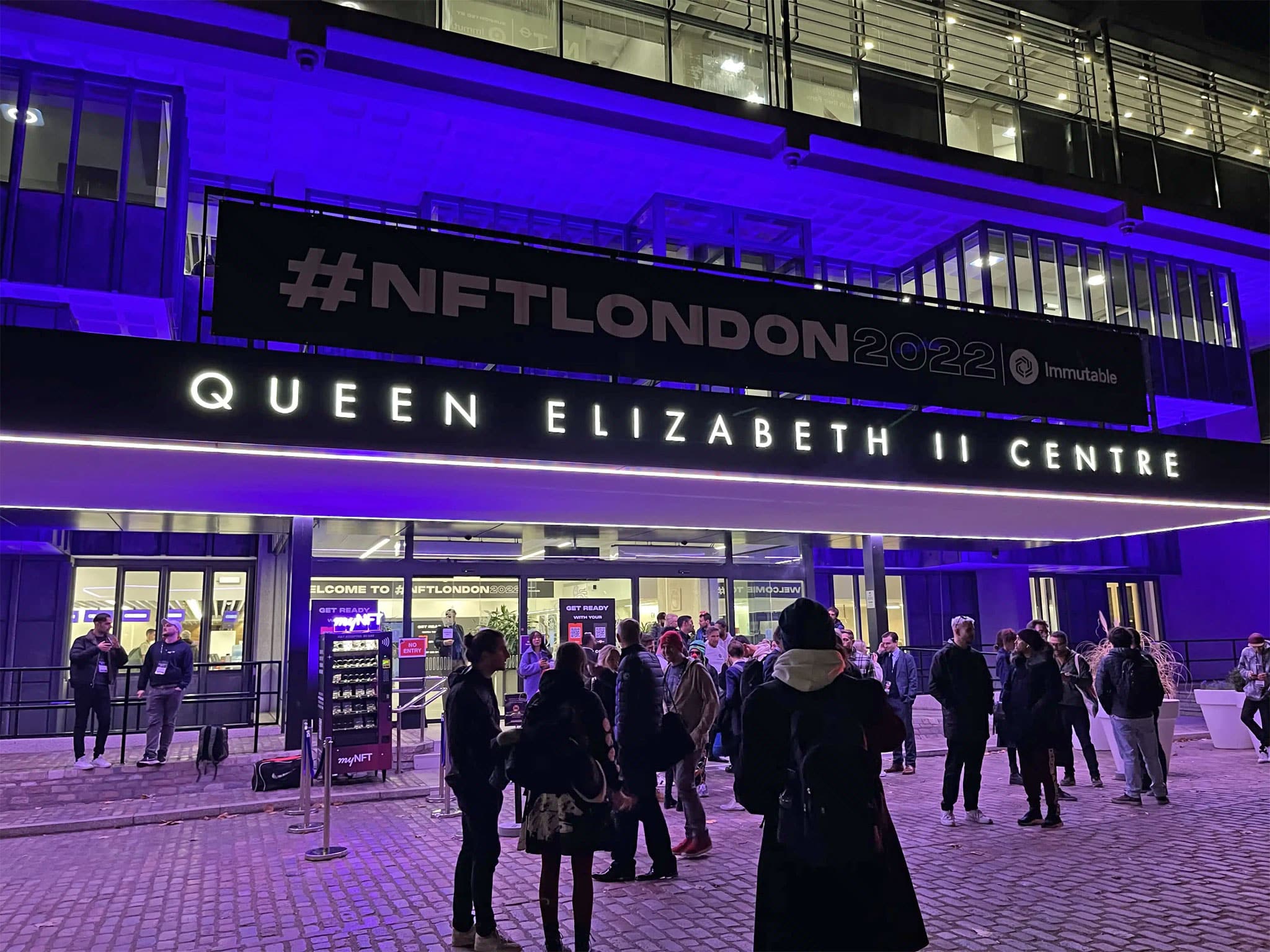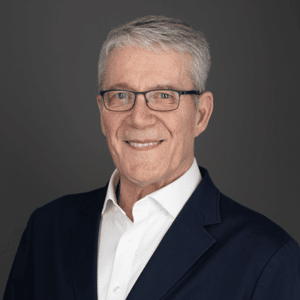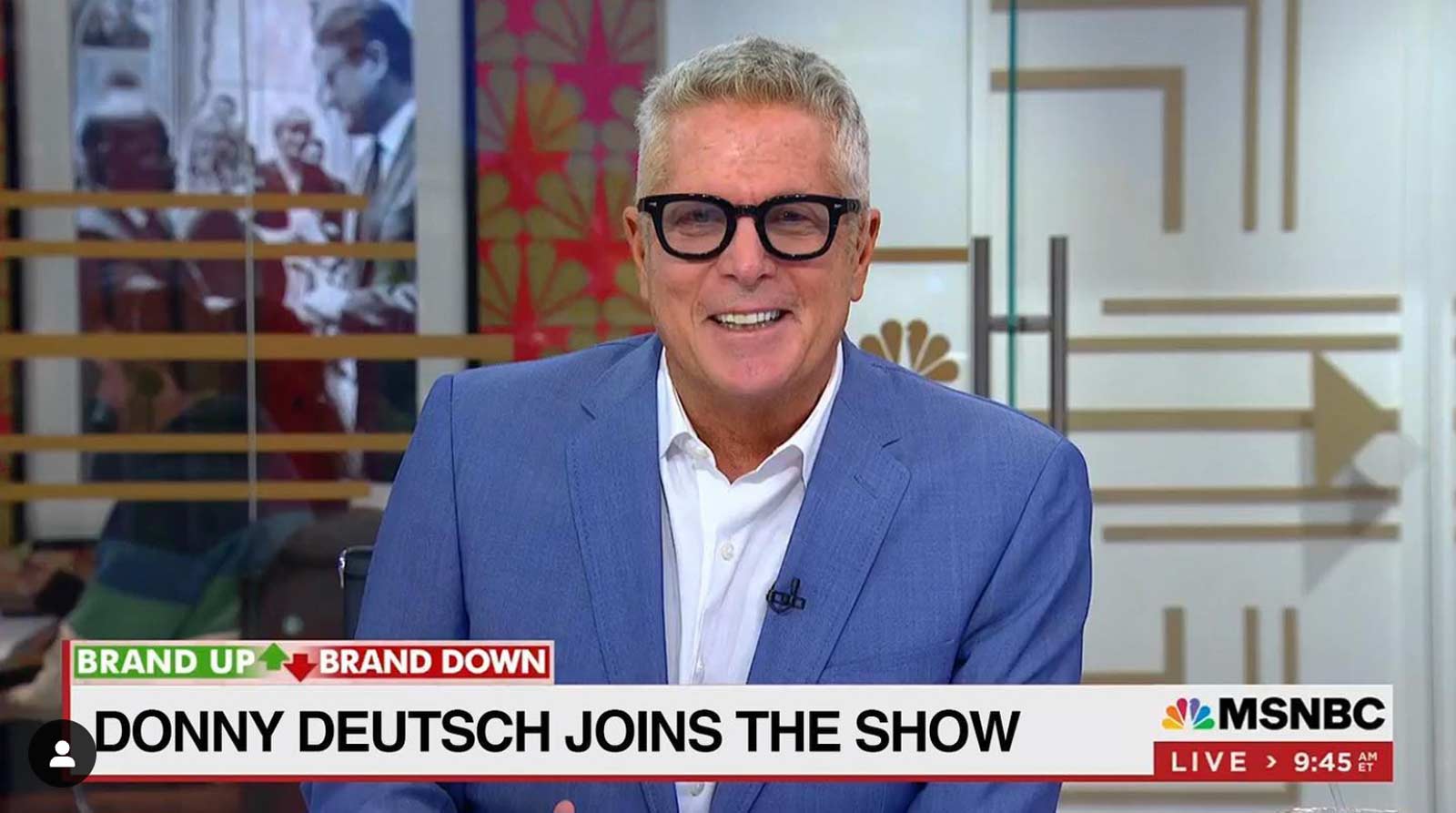For many people who think NFTs are just about digital artwork, the NFT London 2022 two-day conference and exhibition in early November would have been a real eye opener.
NFT London was about much more than that. Yes, it included a lot of digital artwork but this event was not an exhibition of art. This was an event to showcase works, ideas and examples on areas with topics as varied as “The Future of NFTs and Art,” “How to Build and Engage an NFT Community,” “How NFTs Created the New Art World” and “Building the Creator Economy and Bringing Photo NFTs On-Chain,” to name just four of the session choices in the art track where I focused my attention.
If anything, it was an exhibition of ideas and insights that made it of immense value in understanding and seeing what’s hot in the overall NFT space right now and where it’s on its way to. There was much talk about utility and community.
It wasn’t really an event for raw beginners, though. All the sessions I attended required at least some acquaintance with NFTs, market developments and what was happening in the space.
Big events like this with hundreds of speakers and thousands of attendees tend to excel in superlatives and accentuate the positives. Optimism, confidence and sheer exuberance were on full display in London, with little attention paid to the severe challenges brought on by bad actors in the crypto space..
How more exuberant could it be when an NFT vending machine, no less, was part of things? The first of its type in Europe apparently. And perhaps a glimpse of mainstream consumerism to come.
In the queue at #MyNFT, the #NFT vending machine at #NFTLondon2022 pic.twitter.com/Q79JF716B2
— Neville Hobson (@jangles) November 4, 2022
To gain the most from this event required some keen planning and forethought long before making the trip to the Queen Elizabeth II conference centre in London, just opposite Westminster Abbey.
With more than 800 speakers from 160 countries organized across 16 topic tracks during the two days, with sessions spread across all five floors of the QEII conference centre, this was an organizational tour de force to ensure everything happened where and when it was supposed to.
At least, that was the plan. Reality, though, got in the way when I encountered a handful of my sessions not in the rooms they were listed for. It made for some interesting surprises with my topic and speaker planning. But overall, this was a major success in logistics management.
Discovery and insights
In preparing for being at NFT London, I chose sessions in the art track addressing a wide range of topic areas that would give me discovery and insights into what artists and other creators were doing. This was actually quite a broad remit judging by the different people and subject areas listed in this track on the event website.

For example, in a session titled, “How NFTs Can Nurture a New Generation of Patrons for Museums,” Stephan Holzer, co-founder of Patron of Art, a high-quality NFT platform for cultural institutions, showed how collectors can collect exclusive NFTs co-created with the world’s leading museums, archives, collections, festivals and events.
Holzer presented examples of institutions in Europe and the United States already benefiting from this approach to patronage, including the National Art Museum of Ukraine, the Belvedere Museum Vienna, the British Museum in London, Lucerne Festival in Switzerland and the Museum of Fine Art in Boston, all of which offer patrons opportunities to acquire digital copies of physical art works as NFTs.
All good examples of utility and community building.
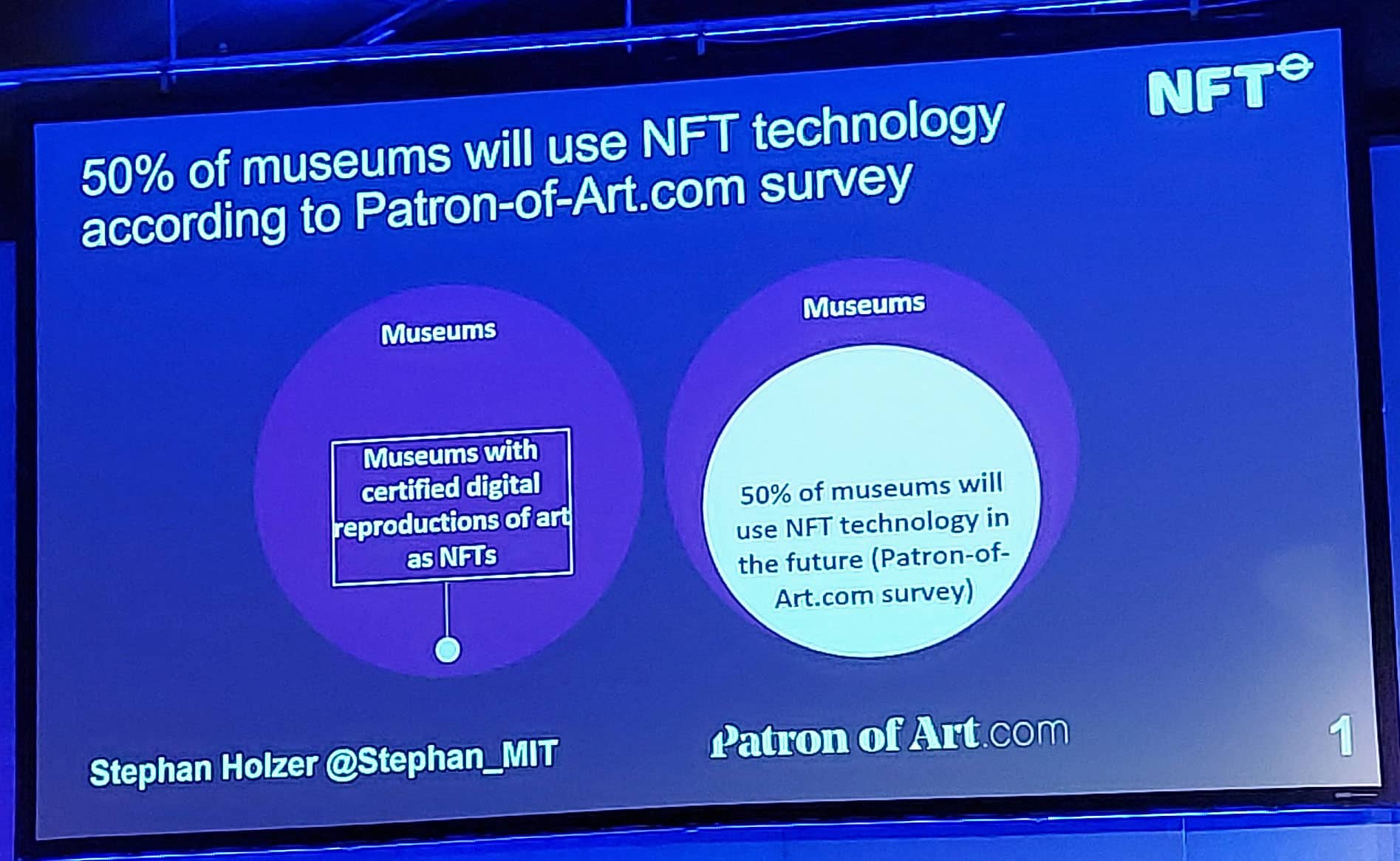
“Fifty percent of museums will use NFT technology,” Holzer said, citing the result of a survey his platform recently conducted with cultural institutions.
In the panel session “How NFTs Created the New Art World,” digital artist Abby Mansfield said, “In the future there will just be artists, whether traditional or NFT, just artists,” a view I subsequently heard expressed in other sessions in one form or another.
Mansfield noted another foundational point about the evolution of the use of NFTs that I believe is key to their demonstrating value to people: “NFTs will be a method of proving ownership,” she said. More utility talk.
For NFT artists – those who create NFTs – Kate Philipson, NFT artist and host of the recently launched Fangirl Friday podcast about the creative side of NFTs, observed, “You have to spend time in building and investing in your community” in the panel discussion in the session “A Year in the Life of an NFT Artist.”
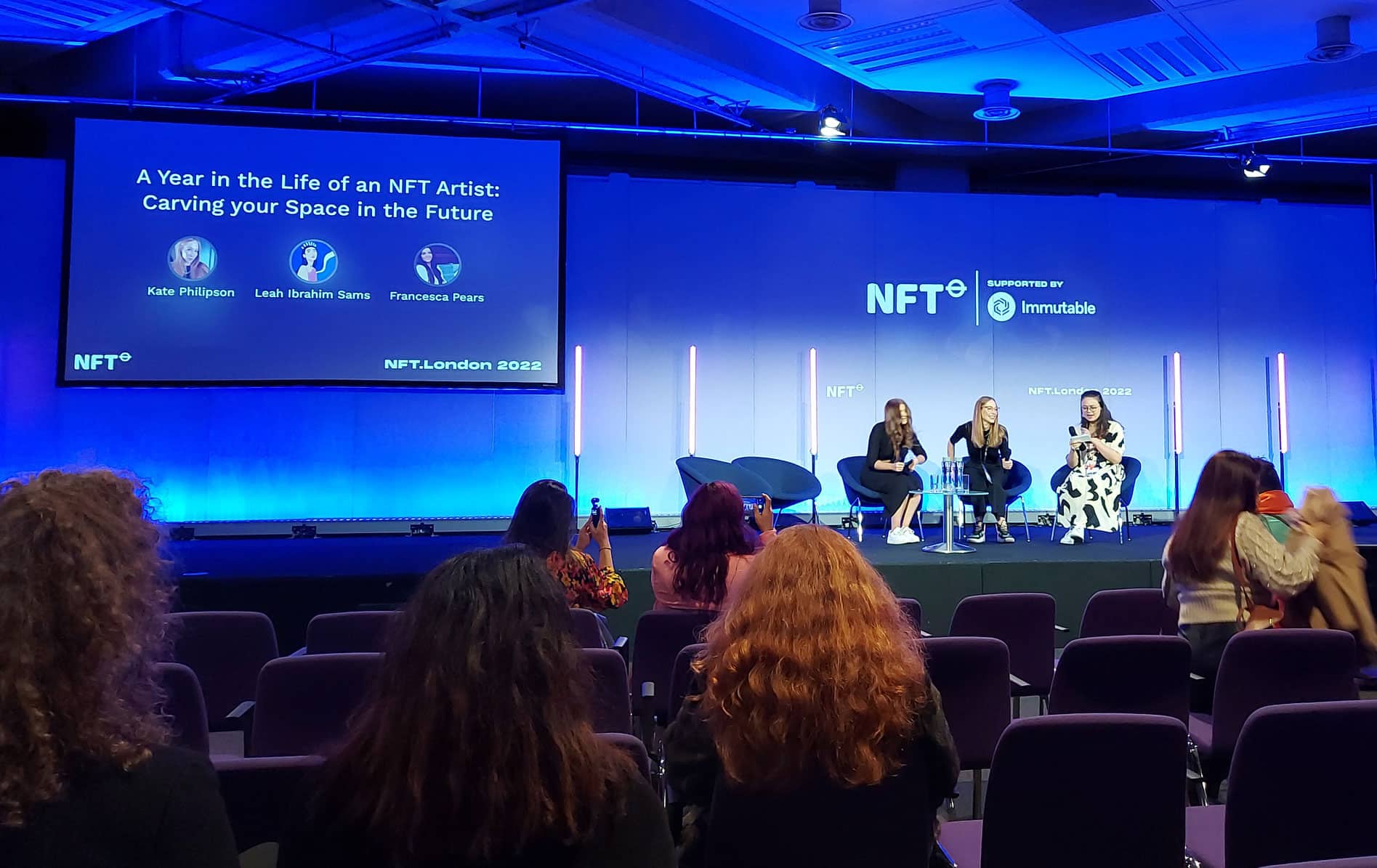
Fellow panelist Francesca Pears, founder and artist at Lost Girls Metaverse, noted that she had never used Twitter until she found so many people to connect with in the common interest of NFT creativity. “I found my tribe!” she said.
The presentation session “Fractionalizing Fine Art With NFTs: Making Fine Art Accessible to the Masses” was one of the sessions I had not planned to attend but it was happening at the time and place another session I had planned to attend was supposed to happen.
It proved to be quite interesting. Presenter Harold Eytan is CEO of Particle Collection, a platform that enables anyone to own, collect, and experience art masterpieces through blockchain and NFTs. This involves taking a painting’s title deed or other proof of ownership and dividing it into 10,000 unique NFTs called ‘‘particles.’’
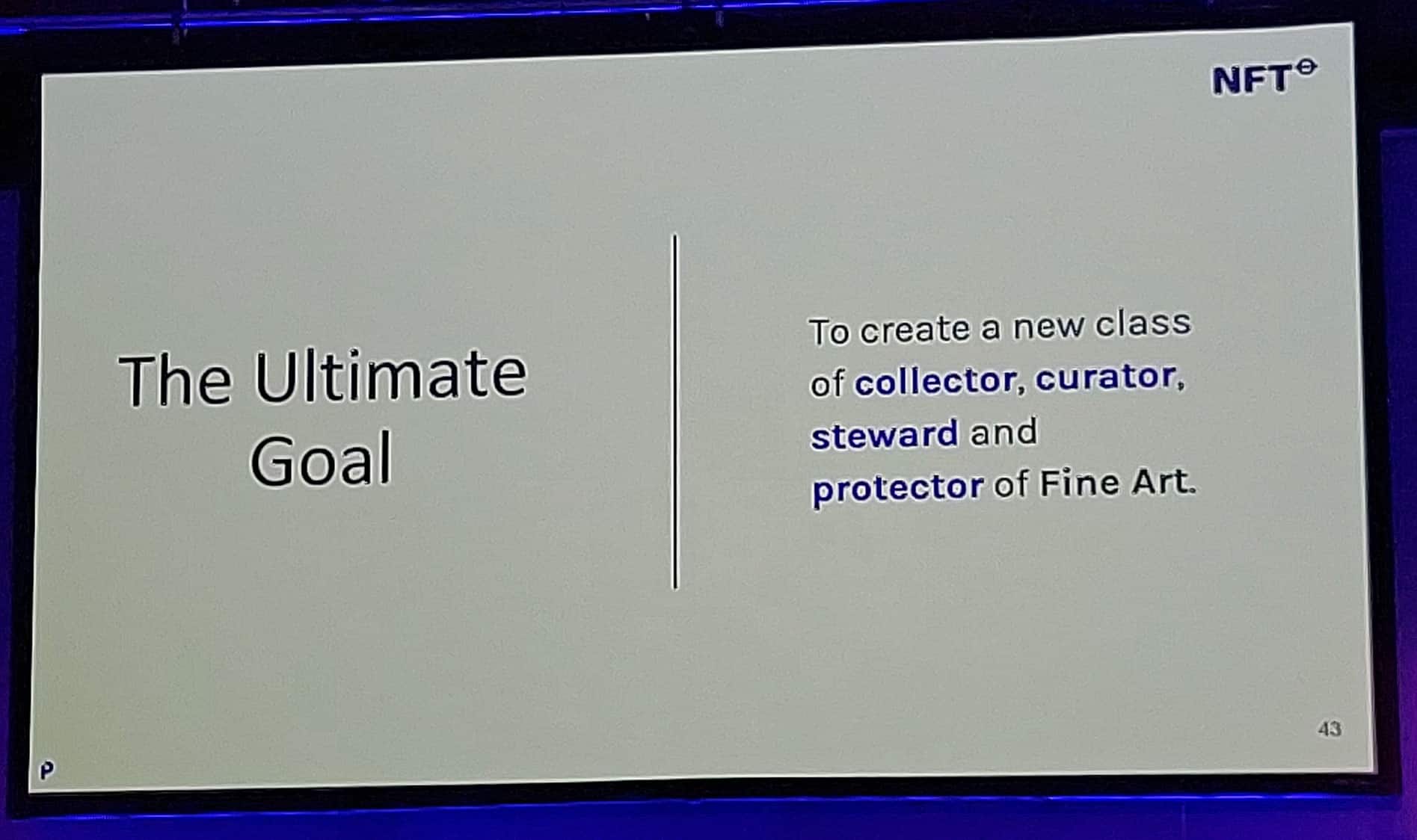
He spoke, plainly and directly, of a driving force in his business where Web3 and NFTs “unlock the power of community.” He declared that ownership enhances the enjoyment of art. “When we create communities around ownership, it enables owners to build their own collections.”
Forging new paths
It’s clear that a common thread ran through all the sessions I attended. That thread embraces utility and community, connected with the open-minded willingness to embrace the new, discard the no-longer-useful and forge new paths in individuals’ own evolution of talent, skill and knowledge.
These are some of the many enduring impressions I took away from NFT London. While there has been criticism of some elements of this event – notably the perceived high cost for attending, which may have contributed to the very low attendance I saw in some sessions, and the low quality of some speakers – I want to salute the organizers, NFT NYC, for exporting their successful New York event formula that worked well in the UK.
On a scale of 1 to 5, where outstanding is marked as 5, I score this event as 4.5.
Finally, many speakers and attendees have published reports and narratives of their experiences at NFT London. If you’d like to explore further, a good starting point is this round-up by NFT NYC. Well researched and written, balanced and a good read. Also search the Twitter and Instagram hashtag #NFTLondon2022 for social media comment.
The NFT future is bright!

